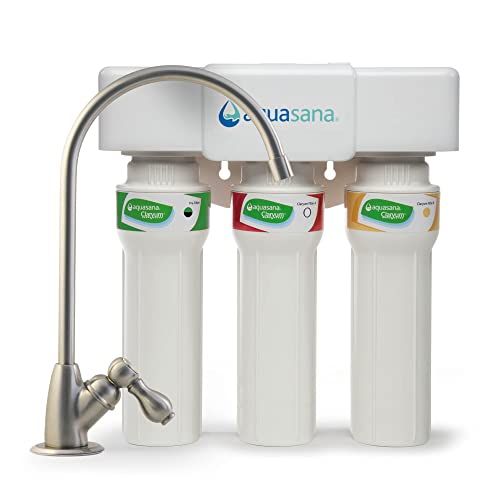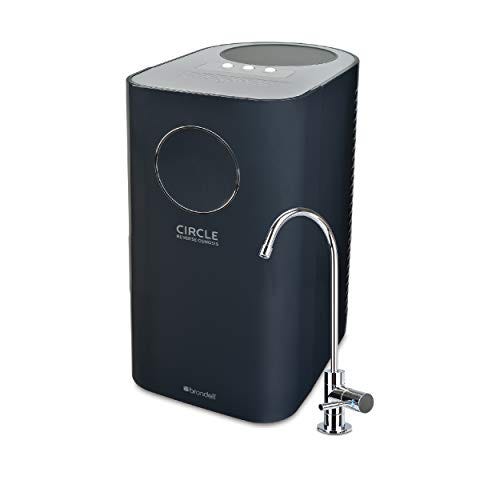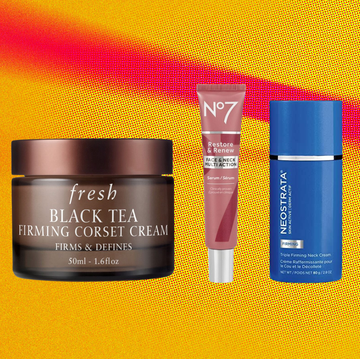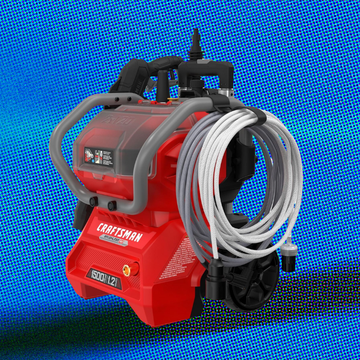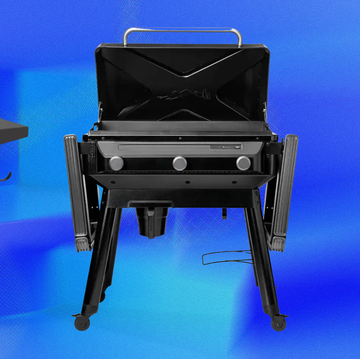The Best Under-Sink Water Filters for Safer, Delicious Tap Water
The out-of-sight devices are the most convenient way to treat your drinking water.

We've been independently researching and testing products for over 120 years. If you buy through our links, we may earn a commission. Learn more about our review process.
There are many ways to filter your home's tap water, from carafe-style pitchers to whole-house water treatment systems. Those options have their place, but when it comes to maximum value and convenience, our experts say an under-sink water filter is the way to go. The device lives discreetly in the cabinet under your kitchen sink with a dispenser that sits next to your main kitchen faucet, delivering clean, odor-free water with the turn of a knob.
Our team in the Home Improvement & Outdoor Lab at the Good Housekeeping Institute has tested dozens of water filters in recent years, including more than 20 under-sink models. We considered whether filters were easy to install (and easy to replace), flow rate and certifications. Read on for our top picks — and start enjoying delicious water directly from the tap.
Pros
Superb filtration, including PFAS
Easy to install
Resists clogging
Cons
Takes up more cabinet space than some
Higher filter-replacement costs than some other models
Filter type: Pre-filter, activated carbon and catalytic carbon with ion exchange | Filter capacity: 800 gallons | Dimensions: 4.25" x 12" x 12.875" | Flow rate: 0.72 gpm | Filter cost per year: $140
Why we love it: Aquasana has staked its reputation as a leader in water filtration over the last quarter century — and the brand has routinely impressed our testers in the process. The multi-stage filtration on the Claryum delivers top-level protection against a slew of contaminants.
Installation: Our experts noted that the Aquasana is easy to install, however it may take up more cabinet space than others, since it uses multiple filters.
The filters were easy to replace, given the twist-off design, though replacement costs were higher than other models we tested. We liked that the dispenser comes in three finishes: brushed nickel, chrome and oil-rubbed bronze.
Filter performance: This 3-stage under-sink filter earned top marks from our engineers, thanks to its innovative multi-filtration technology, which is NSF-certified to capture 77 contaminants, including heavy metals, pesticides, pharmaceuticals and water treatment disinfectants. It’s also one of the few filters out there certified to remove PFAS, also known as forever chemicals, because they don’t break down in the environment or in our bodies.
Tester notes: The device delivered superb filtering without premature clogging or any drop in flow rate, even though one of our testers used it over several months for everything from cooking to filling the coffee machine each morning.
Pros
Excellent price
Simple installation and filter replacement
Cons
Not certified to remove pharmaceuticals, herbicides and pesticides
Filter type: Granular activated carbon | Filter capacity: 400 gallons | Dimensions: 14.25" x 9.25" x 8.4" | Flow rate: 0.5 gpm | Filter cost per year: $80
Why we love it: Culligan is another trusted name in water filtration with a well-established record from past Good Housekeeping Institute reviews. Besides its low initial cost, replacement filters are relatively affordable at around $80 per year.
Installation: Everything needed for installation comes with the device, including mounting hardware and water supply adapter. Since the system only uses one filter, it takes up little space in the cabinet. It lived up to EZ-Change name with its twist-on, twist-off filter mechanism.
Filter performance: The system is certified to capture a wide range of contaminants, including lead, mercury and cysts, and it reduces chlorine taste and odor. That said, its granular activated carbon filtration is not quite as robust as other top picks: For example, the filter is not certified to NSF standard 401, which covers pharmaceuticals, herbicides and pesticides.
Tester notes: The EZ-Change can filter 500 gallons before needing a replacement. Testers called this respectable for a bargain-priced filter, but less than the 700 to 800 gallons they saw with other models, making the Culligan a better fit for small households.
Pros
Space-efficient design
Excellent filtration
Resists clogging
Cons
Dispenser is less sturdy than some other models
Replacement filters are harder to come by
Filter type: Solid carbon block | Filter capacity: 750 gallons | Dimensions: 5.8" x 5.8" x 8.5" | Flow rate: 0.75 gpm | Filter cost per year: $96
Why we love it: We rank Multipure as another top brand in residential water filtration, thanks to our experts' experience with its consistent performance and reliability over the years. If cabinet storage space is tight in your kitchen, you’ll appreciate the compact design of Multipure’s under-sink water filter.
Installation: Initial installation was straightforward according to our experts, and it’s easy to replace the filter. Our experts also noted that the 5.8" x 5.8" x 8.5" housing can be mounted to a cabinet wall, leaving plenty of room for other items under the sink.
Filter performance: Certified to NSF standards 42, 53 and 401, the solid carbon block filter (versus granulated carbon) is excellent at capturing a wide range of contaminants. Our tester reported that, provided the filter is changed annually, flow rate remains strong and steady even during the summer months, when household water consumption peaks. It also resists clogging.
Tester notes: Through extensive home use, testers praised the exceptionally clean taste of filtered water from the Multipure. Though one tester added that the dispenser isn't quite as sturdy as those evaluated on other models. “It’s also worth noting that I could only find certified replacement filters on the Multipure website,” said another tester.
Pros
Easy installation and filter replacement
Compatible with existing faucets
Cons
Filters need to be replaced more frequently
Filter type: Solid carbon block | Filter capacity: 784 gallons | Dimensions: 3" x 20" | Flow rate: 1.5 gpm | Filter cost per year: $175
Why we love it: A recent Good Housekeeping Kitchen Gear Award Winner, the Claryum Direct Connect stood out to our Lab experts and testers for its easy installation and convenience. Unlike other filters we tested, it hooks up directly to your existing faucet, making it an excellent choice for apartments or rentals, where installing a separate dispenser (which usually involves drilling into the sink deck) isn't advised.
Installation: Thanks to the streamlined, single-cartridge design, set up was straightforward, though at 20 inches tall, some testers said the filter had to be installed lying down in their cabinet, which took up more storage space. The device only connects to your cold-water line, so hot water won't be filtered or wasted while cleaning dishes.
Performance: Testers found it handy for filling up coffee pots and other large containers. We also like that it's certified by NSF Standards 42, 53 and 401, meaning it will effectively remove contaminants like chlorine, lead, pharmaceuticals and more.
Tester notes: Testers who rent confirmed that this was their only option for filtered water. “Though you do end up treating a lot more water compared with systems that use a side dispenser intended mainly for drinking water," one tester added. "That means you'll need to replace filters more frequently, adding to the total operating cost."
Waterdrop Reverse Osmosis Water Filtration System

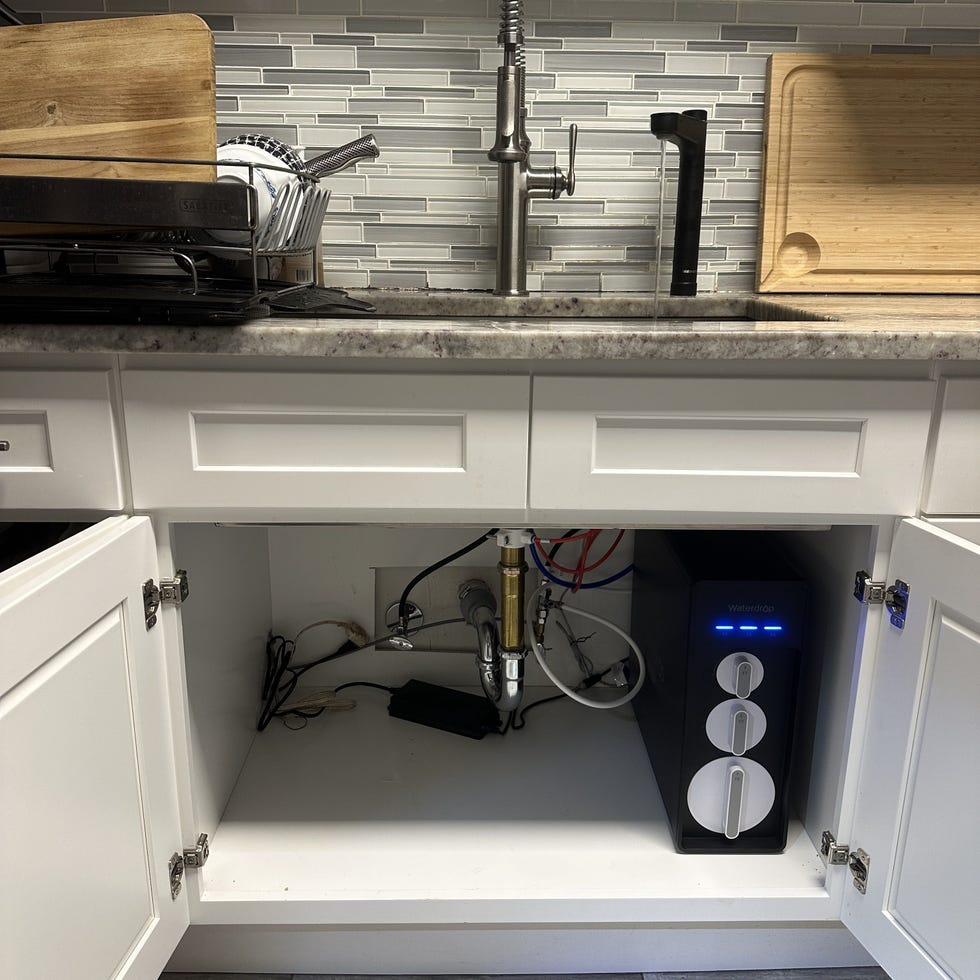
Pros
Exceptional filtering
Compact, tankless design
Smart controls
Cons
Not suited to well water
Filter type: Reverse osmosis | Filter capacity: 400 gallons | Dimensions: 18.12" x 5.67" x 17.72" | Flow rate: 0.4 gpm | Filter cost per year: $130
Why we love it: Our engineers found that Waterdrop's tankless design saves space compared with traditional RO systems and is more efficient too, wasting far less water in the filtration process. It’s also up there with the best when it comes to capturing contaminants.
Installation: Though easier to install than reverse osmosis (RO) systems we’ve tested in the past, most of which included large tanks that had to live in a nearby closet, getting the Waterdrop up and running was more complicated than standard under-sink filters. For starters, it needs to be plugged in, so you’ll need to add an electrical outlet if there’s not one present.
Filter performance: The Waterdrop is NSF 58 certified, one of the highest standards, so it can stand up to everything from heavy metals to pharmaceuticals to PFAS. Our pros like the device’s intelligent design, including the filter light indicator on the faucet and the smart monitoring panel, which tells you the quantity of TDS, or total dissolved solids, being filtered out of your water. Unlike other filters in this round-up, the Waterdrop is not intended for well water, since the presence of large particulates can cause clogging.
Tester notes: Despite the tricky installation, testers raved over the quality of the filtered water. “I noticed the difference right away,” said one tester. “Our water used to have a funny taste. Now it’s better than bottled water.”
Pros
Top-level filtration
Easy to change filters
Cons
Less water efficient than non-RO filters
Filter type: Reverse osmosis | Filter capacity: 468 gallons | Dimensions: 13.75" x 9.25" x 16.5" | Flow rate: .26 – .37 gpm | Filter cost per year: $75
Why we love it: The Brondell under-sink water filter costs less than many RO systems and it’s also more compact. Though it does waste some water in its filtering process, it is 10 times more efficient than traditional RO systems, says the brand.
Installation: According to our pros, set up was simple and straightforward and it’s also easy to swap filters in and out. We like that the system is safe for well water.
Filter performance: Our engineers noted that the system is certified under NSF/ANSI Standards 42, 53, 58 and 372. That means it delivers crisp-tasting water, without any chlorine odors, while protecting against most contaminants, including known concerns, like lead and pesticides, as well as emerging ones, like pharmaceuticals in the water supply.
Tester notes: Testers gave the Brondell high marks for water taste. “The system feels very durable,” one added, “so I’m not worried about parts failing prematurely.”
How we test water filters
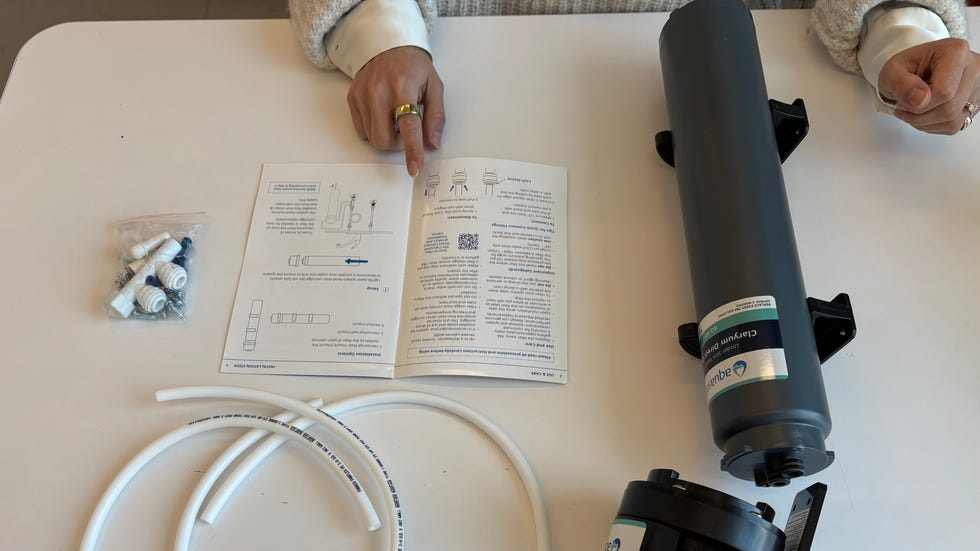
In the Good Housekeeping Institute, our team of engineers, chemists, product analysts and home improvement experts work together to determine the best under-sink water filters for your home. Over the last five years, we have reviewed scores of data points from about 20 under-sink water filters. Hands-on testing takes place in the Home Improvement & Outdoor Lab, as well in the homes of consumer testers, allowing us to evaluate the devices in real-world conditions.
Our testing focuses on the following criteria:
✔️ Installation: Testers assess how easy each filter is to set up. This includes rating the user manuals for clarity of instructions. We also check to see if all necessary parts are included for installation, including mounting hardware and water line adaptors. And we evaluate how easy it is to replace the filters.
✔️ Filter performance: Our experts considered only water filters certified by NSF International, the organization that develops public health standards and certification programs for the industry. Performance is based primarily on which NSF standard the filters are certified for (some standards cover only lead, like NSF 372, while others also include agricultural and industrial toxins, like NSF 401).
✔️ Reliability. This includes checking to see if the filters last as long as promised, without any premature drop off in flow rate. We also take into consideration a brand’s track record, drawing on decades of water filter testing in our homes and Labs.
What to look for when shopping for an under-sink water filter

Under-sink water filters are also known as point-of-use filters, since they treat only water coming from a single source, typically the kitchen faucet. The basic mechanics are always the same, but there are a couple of variables to consider.
✔️ Filtration: There are several different types of filters, depending on your needs. If you get your water from your city, you should receive an annual Consumer Confidence Report (CCR) telling you what contaminants were detected in your municipal water supply in the past year. It's also a good idea to test your water regularly. DIY kits, available online and at home centers, are affordable and easy to use. These are the main kinds of filters:
- Activated carbon — in which a carbon-based filter acts like a magnet, absorbing contaminants from the water — is the most common technology. Multi-stage filters, or 2-stage filters, might also include a pre-filter to remove larger sediment, as well as a second carbon filter to improve odor and taste. Sometimes there is even a third filter, maybe with an additional carbon block or a UV sterilizer to kill bacteria and viruses. The 3-stage filters tend to cost more, so make sure it's really necessary.
- Reverse osmosis (RO) is a newer type of filter that captures contaminants by pushing pressurized water through a semi-permeable membrane. The process is extremely effective, but it's more expensive and less efficient — and many systems require a tank that won't fit under your sink. Before you invest in an RO water filter, our experts recommend testing your water to determine whether a conventional filter will provide enough protection.
- Ultrafiltration (UF) is another technology you might also hear about. Like RO, it forces water through semipermeable membranes. Because the pore size of the UF membranes is bigger, these systems don't capture all contaminants, including total dissolved solids (TDS) like chlorine and fluoride; we did not review any UF systems for this reason.
✔️ Installation: While every system is unique, most come with a filter housing that gets mounted to an inside wall of your sink cabinet. Always check the dimensions listed in our product reviews (or on the manufacturer's website) to ensure there's room in your cabinet. One end of the filter ties into your cold-water line via a flexible connection. A second connection goes from the other end of the filter to the dispenser, which sits on your sink deck. Installing the dispenser is often the trickiest part, since it involves drilling a hole in the countertop. Capable DIYers should be able to handle the project, but it might be worth calling in a plumber if you’re less experienced, especially if your water line needs to be modified.
✔️ Maintenance: The main consideration is filter replacement and filter capacity. Take note of the steps and costs that go into the process. Our pros look for models with long-lasting filters and high filter capacity (400 gallons is good, 600-plus gallons is better), affordable replacement filters ($100 or less per year) and simple "tool-free" swapping in and out of the filters.
✔️Flow rate: The flow rate refers to how much water can flow through a filter within a given amount of time. It's usually measured by gallons per minute (GPM). The higher the flow rate, the better your water pressure will be.
Do under sink water filters actually work?

Given the array of contaminants, including lead, arsenic and PFAS, that can find their way into drinking water supplies, it’s absolutely worth investing in an under-sink water filter for your home. It's one of the easiest ways to ensure you're only getting the best-tasting and healthiest water in your home. Even if your tap water is free of toxins, the addition of chlorine at the water treatment facility can give it a funny taste and smell that a good under-sink filter will eliminate.
How do I know if I need an under sink water filter?

The main reason to install an under-sink water filter is if you suspect your home's tap water might contain contaminants. If your water comes from the town or city, your local suppliers must provide an annual Consumer Confidence Report (CCR), which will tell you which contaminants were detected in your water supply and any potential health effects.
Even if your CCR report comes back clean, contaminants can still enter your water as they make their way from the treatment plant to your home. That's why our experts recommend a water test as the best assessment of your home’s water quality. State-certified laboratories provide the most comprehensive testing, though DIY water test kits can be a cost-effective way to get a good sense of what contaminants may be lurking in your water.
Beyond contaminants, some homeowners feel their tap water has a funny taste or smell. A capable water filter can remedy that problem too.
Do I need a reverse osmosis water filter?

Our expert response to this question used to be a hard “no.” That’s because reverse osmosis (RO) systems, while extremely effective at capturing contaminants, had too many downsides, starting with their steep price tag and high operating costs. Their large tanks also required a lot of storage space (like a nearby closet) and they wasted up to 5 gallons of water for every 1 gallon of clean water they produced.
In recent years, though, brands have come out with RO systems that address these pain points. While they still tend to be the most expensive option, prices have come down significantly. Many systems are compact enough to fit in the cabinet under the kitchen sink, and they are much more water efficient, wasting only 1 or 2 gallons for every 1 gallon they produce.
For these reasons, our experts say RO is now worth a look, but we recommend the heavy-duty filters for more extreme situations where tap water has a lot of likely contaminants.
How much should under sink water filters cost?

According to our pros, you can spend as little as $100 on an under sink water filter or as much as $500. More expensive filters tend to have more robust filtration systems. Our experts advise shoppers to also pay attention to the replacement filter costs, which can range from $100 to $200 a year.
Why trust Good Housekeeping?

Our team of home and health experts at the Good Housekeeping Institute is constantly testing water filtration products, both in our Lab and in the homes of expert testers. Dan DiClerico has written about the residential water filter market for 25 years, reviewing dozens of products and systems from all leading brands. In his role as Director of the Home Improvement & Outdoor Lab at the Good Housekeeping Institute, Dan oversees water filter testing alongside our health and technical experts.
We also consult with outside organizations, including experts from NSF International, the organization that develops public health standards and certification programs for the industry, and the Water Quality Association (WQA), a not-for-profit trade group representing the U.S. water treatment industry.
Having written thousands of product reviews and how-to articles on all aspects of home ownership, from routine maintenance to major renovations, Dan (he/him) brings more than 20 years of industry experience to his role as the director of the Home Improvement & Outdoor Lab at the Good Housekeeping Institute. A one-time roofer and a serial remodeler, Dan can often be found keeping house at his restored Brooklyn brownstone, where he lives with his wife and kids.

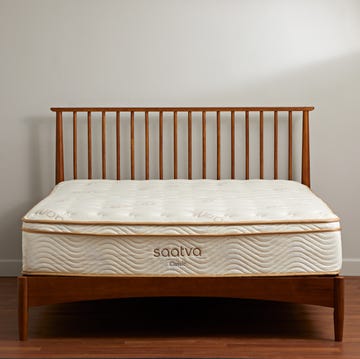
The Best King Size Mattresses
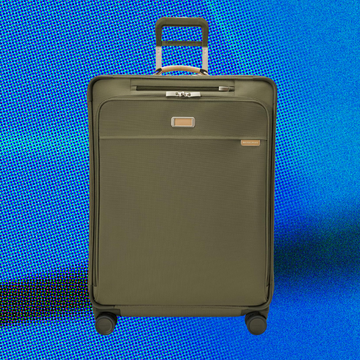
The Best Luggage for International Travel
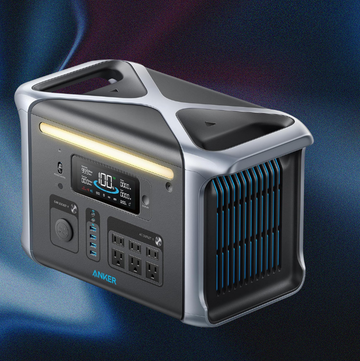
The Best Solar-Powered Generators

The 15 Best Natural and Organic Sunscreens
